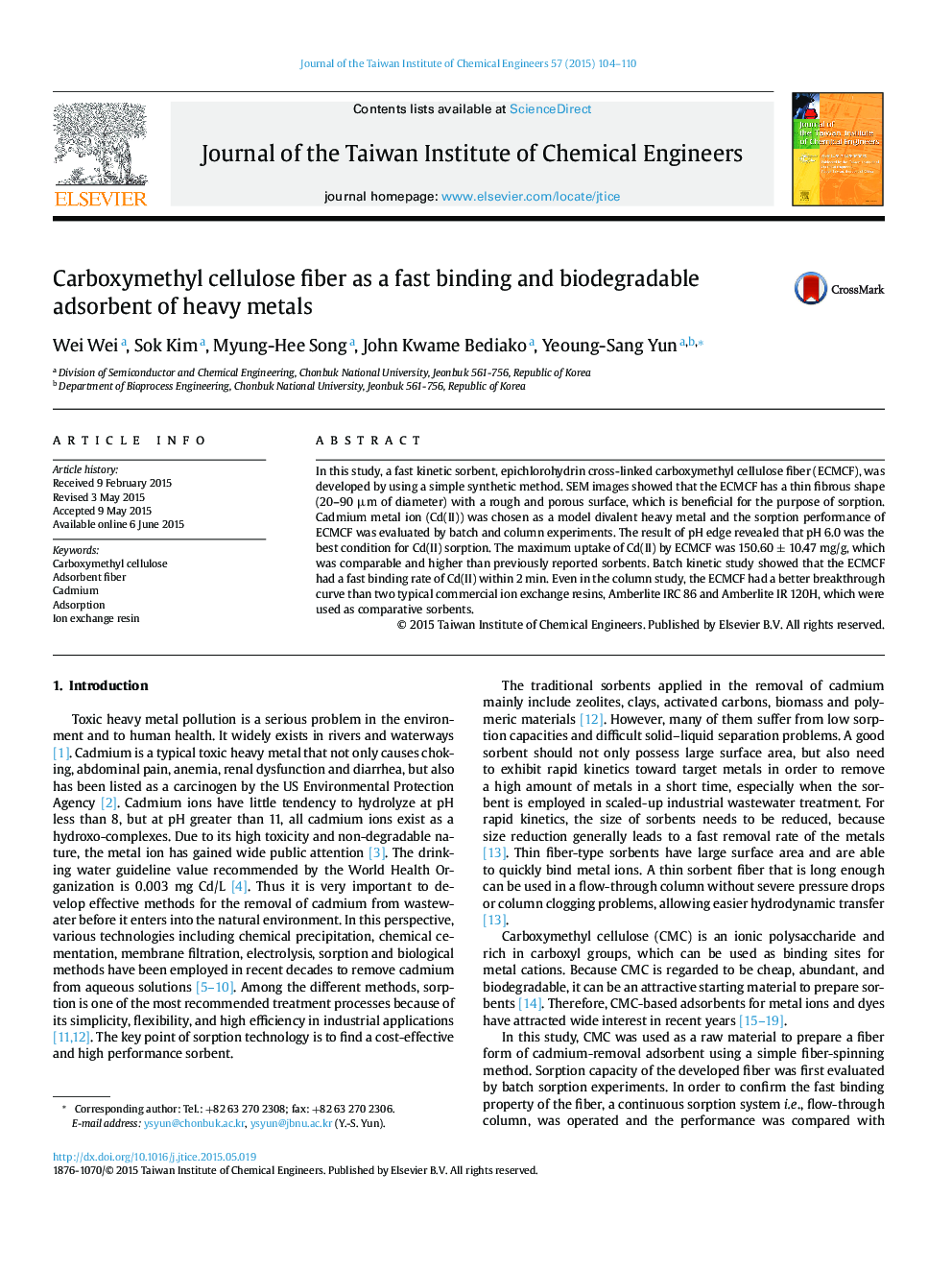| Article ID | Journal | Published Year | Pages | File Type |
|---|---|---|---|---|
| 690802 | Journal of the Taiwan Institute of Chemical Engineers | 2015 | 7 Pages |
•A thin fibrous carboxymethyl cellulose adsorbent (ECMCF) was developed.•The maximum Cd(II) uptake was 150.60 ± 10.47 mg/g.•Sorption equilibrium of ECMCF was attained extremely fast within 2 min of contact.•The ECMCF showed much better breakthrough curve than commercial resins.
In this study, a fast kinetic sorbent, epichlorohydrin cross-linked carboxymethyl cellulose fiber (ECMCF), was developed by using a simple synthetic method. SEM images showed that the ECMCF has a thin fibrous shape (20–90 µm of diameter) with a rough and porous surface, which is beneficial for the purpose of sorption. Cadmium metal ion (Cd(II)) was chosen as a model divalent heavy metal and the sorption performance of ECMCF was evaluated by batch and column experiments. The result of pH edge revealed that pH 6.0 was the best condition for Cd(II) sorption. The maximum uptake of Cd(II) by ECMCF was 150.60 ± 10.47 mg/g, which was comparable and higher than previously reported sorbents. Batch kinetic study showed that the ECMCF had a fast binding rate of Cd(II) within 2 min. Even in the column study, the ECMCF had a better breakthrough curve than two typical commercial ion exchange resins, Amberlite IRC 86 and Amberlite IR 120H, which were used as comparative sorbents.
Graphical abstractFigure optionsDownload full-size imageDownload as PowerPoint slide
